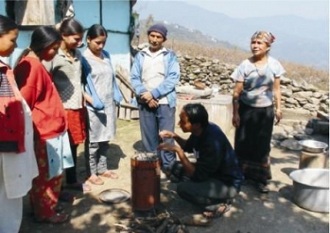AIR QUALITY, ATMOSPHERE & HEALTH, 2012, DOI: 10.1007/s11869-012-0173-8
Increased cardiovascular risk in association with chronic airflow obstruction among premenopausal rural women of India who cook exclusively with biomass
Anindita Dutta, Manas Ranjan Ray, Bidisha Mukherjee and Saswati Chowdhury
We aimed to compare the cardiovascular risk in biomass-using women with or without chronic obstructive pulmonary disease (COPD). A total of 22 biomass-using married women with COPD and 24 matched controls with normal lung function were enrolled for this purpose. Platelet P-selectin (P-sel) expression and platelet–leukocyte aggregation were determined using flow cytometry. Platelet aggregation by collagen was measured by aggregometer.
Soluble P-selectin (sP-sel), tumor necrosis factor-alpha (TNF-α), interleukin-8, -6, -10 (IL-8, IL-6, IL-10), neutrophil-activating protein-2 (NAP-2), C-reactive protein (CRP), oxidized low density lipoprotein (oxLDL) in plasma were measured by enzyme-linked immunosorbent assay.
Generation of reactive oxygen species (ROS) by leukocytes was measured by flow cytometry, and erythrocyte content of superoxide dismutase (SOD) was measured by spectrophotometry. Particulate matter with a diameter of less than 2.5 μm (PM2.5) in indoor air was measured by real-time aerosol monitor.
Compared with control, biomass users with COPD had increased expression of platelet P-selectin, elevated levels of sP-sel, oxLDL, TNF-α, IL-8, IL-6, NAP-2, CRP, lowered IL-10 and more circulating platelet-neutrophil (p < 0.0001) and platelet–monocyte (p < 0.0001) aggregates.
ROS generation was increased by 19.5% while SOD was depleted by 32% in women with COPD. Biomass smoke-induced COPD is associated with excess cardiovascular risk via oxidative stress, platelet activation, and inflammation.



